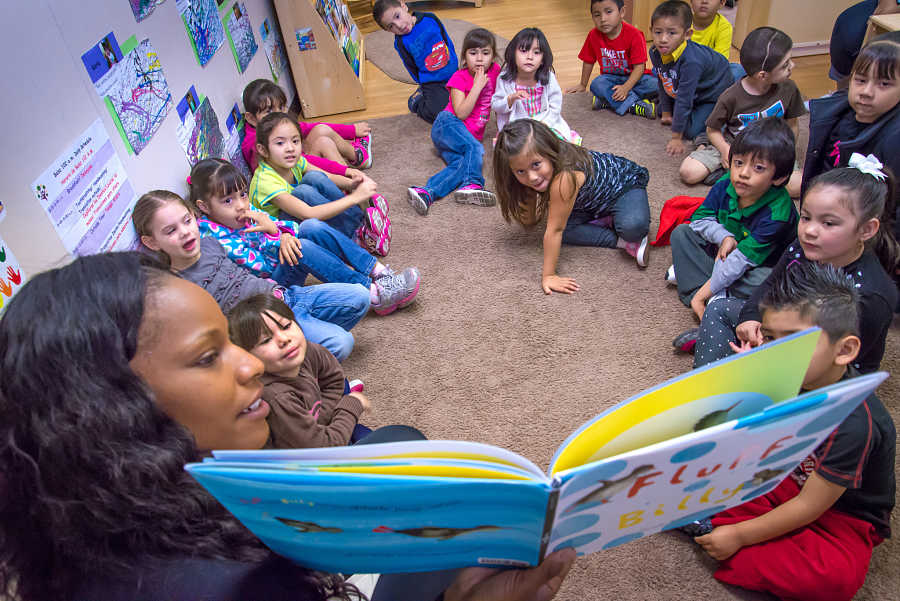PHOENIX, ARIZ.: The difference between digging and burrowing may not seem particularly earth-shaking—but in a “kinesthetic learning” exercise that’s part of Childsplay’s Drama Frames development model, students are encouraged to get up and act these behaviors out.
“When you’re digging, you’re using your imaginary shovel, but when you’re burrowing, you take on animal characteristics,” says Korbi Adams, education outreach specialist at the children’s theatre company based in Tempe. “So you’re physically embodying the vocabulary—embedding it in muscle memory, and also in an emotional context. Once you’ve made that connection—after you sweat, and your arms may hurt a little bit—then at end of the lesson, we say, ‘Show us with your body.’ And students can use their bodies to show understanding.”
Theatre teaching techniques like have been part of Childsplay’s programming since 2006, thanks to funding by the U.S. Department of Education and the Helios Education Foundation. The company’s work with 4th-through-6th-graders at Phoenix-area elementary schools included a research component, with scholars from Arizona State University on hand to study the program’s results. Now the DOE is granting nearly $300,000 to the Osborn School District to support another three-way partnership—among the district, Childsplay and ASU researchers—to do similar work with kindergarten-through-3rd-graders at Encanto Elementary School in downtown Phoenix.
Other aspects of the program include “infusing story-times with drama techniques that reinforce literacy,” explains Jenny Millinger, Childsplay’s director of strategic initiatives. Millinger stresses both the longitude and latitude of the program: “What’s thrilling is that we can look over a period of multiple years at how drama intervention can have success in three different language streams”—meaning that it will be tried in mainstream class, structured English immersion classes for language learners, and bilingual classrooms where the pedagogy is half-and-half English and Spanish. “We will get to track the same group of students three years in a row.”
The program’s most important learners, though, aren’t the kids but the teachers themselves. As Adams put it, “We’ve been able to develop a methodology for helping teachers integrate drama into their classroom. Our specialty has become transferring these skills and knowledge to them so they can teach drama on their own.”
Would that make Childsplay redundant, in effect?
“That wouldn’t be a bad outcome,” Millinger reckons. “Part of what started Childsplay down this path more than 10 years ago is that the arts were being pulled more and more out of curriculum, and it felt like of a responsibility we should take up. So we’re trying to create hubs of knowledge within school districts.”
It also doesn’t hurt to teach young people “how to be an audience member, how to observe,” she adds. If that makes kids likely to attend Childsplay’s productions—not to mention theatre in their future—that can be a “happy byproduct—but this is about making drama part of your daily learning.”


